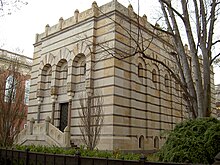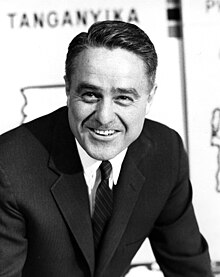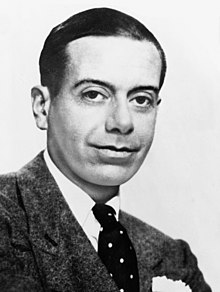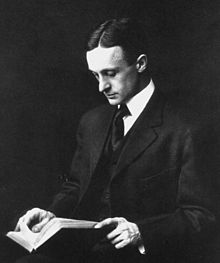Scroll and Key
 Scroll and Key Tomb | |
| Formation | 1842 |
|---|---|
| Type | Secret society |
| Headquarters | Yale University |
| Location | |
The Scroll and Key Society is a secret society, founded in 1842 at Yale University, in New Haven, Connecticut. It is one of the oldest Yale secret societies and reputedly the wealthiest.[1] The society is one of the reputed "Big Three" societies at Yale, along with Skull and Bones and Wolf's Head.[2] Each spring the society admits fifteen rising seniors to participate in its activities and carry on its traditions.
History[]

Scroll and Key was established by John Addison Porter, with aid from several members of the Class of 1842 (including Leonard Case Jr. and Theodore Runyon) and a member of the Class of 1843 (William L. Kingsley), after disputes over elections to Skull and Bones Society. Kingsley is the namesake of the alumni organization, the Kingsley Trust Association (KTA), incorporated years after the founding.
Lyman Hotchkiss Bagg wrote that "up until as recent a date as 1860, Keys had great difficulty in making up its crowd, rarely being able to secure the full fifteen upon the night of giving out its elections." However, the society was on the upswing: "the old order of things, however, has recently come to an end, and Keys is now in possession of a hall far superior...not only to Bones hall, but to any college-society hall in America."[3]
Gifts to Yale[]
In addition to financing its own activities, Scroll and Key has made significant donations to Yale over the years. The John Addison Porter Prize, awarded annually since 1872, and in 1917 the endowment for the founding of the Yale University Press, which has funded the publication of The Yale Shakespeare and sponsored the Yale Younger Poets Series, are gifts from "Keys".
Traditions[]

- At the close of Thursday and Sunday sessions, members are known to sing the "Troubadour" song on the front steps of the Society's hall, a remnant of the tradition of public singing at Yale.[4][5] The song (written in the 1820s by Thomas Haynes Bayly) was recorded by Tennessee Ernie Ford on his 1956 album, "This Lusty Land", as "Gaily the Troubador".
- In keeping with the practice of adopting secret letters or symbols such as Skull and Bones' "322," Manuscript's "344," and the Pundits' "T.B.I.Y.T.B," Scroll and Key is known to use the letters "C.S.P. and C.C.J.".[6]
- Members of the society sign letters to each other "YiT", as opposed to Skull and Bones' "yours in 322".[6]
- Outside of its tap-related activities, the society has been known to hold two major annual events called "Z Session".[6]
Membership[]

Scroll and Key taps annually a delegation of fifteen, composed of men and women of the junior class, to serve the following year. Membership is offered to a diverse group of highly accomplished juniors, specifically those who have "achieved in any field, academic, extra-curricular, or personal."[7] Delegations frequently include editors of the Yale Daily News and other publications, artists and musicians, social and political activists, athletes of distinction, entrepreneurs, and high achieving scholars.[8][9]
Mark Twain is an honorary member, under the auspices of Joseph Twichell, Yale College Class of 1859.[10]
Architecture[]


The society's "building" was designed in the Moorish Revival style by Richard Morris Hunt and constructed in 1870.[11] A later expansion was completed in 1901. Architectural historian Patrick Pinnell includes an in-depth discussion of Keys' building in his 1999 history of Yale's campus, relating the then-notable cost overruns associated with the Keys structure and its aesthetic significance within the campus landscape. Pinnell's history shares the fact that the land was purchased from another Yale secret society, Berzelius (at that time, a Sheffield Scientific School society). In 2002, the society underwent a major construction project rumored to involve an aquarium beneath the society.
Regarding its distinctive appearance, Pinnell noted that "19th century artists' studios commonly had exotic orientalia lying about to suggest that the painter was sophisticated, well traveled, and in touch with mysterious powers; Hunt's Scroll and Key is one instance in which the trope got turned into a building."[12] Later, undergraduates described the building as a "striped zebra Billiard Hall" in a supplement to a Yale Yearbook.[13] More recently, it has been described by an undergraduate publication as being "the nicest building in all of New Haven.".[14]
Notable members[]







| Name | Yale class | Known for |
|---|---|---|
| Leonard Case Jr. | 1842 | Philanthropist and Founder of Case School of Applied Science in Cleveland, later Case Western Reserve University[15] |
| Theodore Runyon | 1842 | Envoy, then Ambassador, Germany; Battle of Bull Run[15] |
| Carter Henry Harrison | 1845 | Mayor of Chicago, five terms 1879–93; US Representative, 1875–79; cousin of President William Henry Harrison[15] |
| Homer Sprague | 1852 | President of the University of North Dakota |
| Randall L. Gibson | 1853 | US Senator 1883–1892 (Louisiana); US Representative, 1872–1882; Brigadier-General in the Confederate States Army; President, Tulane University[15] |
| George Shiras Jr. | 1853 | U.S. Supreme Court Justice[15] |
| John Dalzell | 1865 | US Congress[15] |
| George Bird Grinnell | 1870 | Anthropologist, historian, naturalist, and writer [16] |
| Edward Salisbury Dana | 1871 | American mineralogist[15] |
| Fred Dubois | 1872 | First US Senator from Idaho 1891–1897, resigned, re-elected 1901–1907; Opponent of gold standard; Engineered statehood for Idaho[15] |
| Henry deForest | 1876 | Southern Pacific Railroad[15] |
| Gilbert Colgate | 1883 | President and Chairman of Colgate & Co.[15] |
| George Edgar Vincent | 1885 | President of the University of Minnesota; President of the Rockefeller Foundation[17] |
| James Gamble Rogers | 1889 | Collegiate Gothic architect, favored architect of Edward Harkness and designed many of Yale's buildings[17] |
| Herbert Parsons | 1890 | US Congress 1904–1910; leading supporter of League of Nations[15] |
| Harvey Cushing | 1891 | Neurosurgeon considered father of brain surgery[17] |
| William Nelson Runyon | 1892 | Acting Governor of New Jersey (May 1919 – Jan 1920)[15] |
| Frank Polk | 1894 | Davis Polk & Wardwell; (acting) Secretary of State, managed conclusion to World War I[15] |
| Allen Wardwell | 1895 | Russian War Relief, Davis Polk & Wardwell; Bank of New York; Vice-President, American-Russian Chamber of Commerce[15] |
| Lewis Sheldon | 1895 | US Peace Commission, Paris Peace Conference, 1918; Olympic medalist, track and field[15] |
| Cornelius Vanderbilt III | 1895 | Brigadier General in the U.S. Army during the First World War[17] |
| William Adams Delano | 1895 | Award-winning Architect; designed many of Yale's buildings[15] |
| Joseph Medill McCormick | 1900 | U.S. Senate 1919-1924; publisher, Chicago Tribune[15] |
| Joseph M. Patterson | 1901 | Founder, New York Daily News; manager, Chicago Tribune[17] |
| Robert R. McCormick | 1903 | Chicago Tribune; Kirkland & Ellis[15] |
| James C. Auchincloss | 1908 | Representative, US Congress 1943–1965, Governor of the NYSE., US Military Intelligence World War I[15] |
| William C. Bullitt | 1912 | US Ambassador, France, 1936–1941, first US Ambassador, Soviet Russia, 1933–1936[15] |
| Mortimer R. Proctor | 1912 | Governor of Vermont, 1945–47[15] |
| Cole Porter | 1913 | Entertainer, songwriter[18] |
| Dean Acheson | 1915 | 51st Secretary of State[15] |
| Wayne Chatfield-Taylor | 1916 | President, Export-Import Bank; Undersecretary of Commerce; Assistant Secretary of the Treasury[19] |
| Dickinson W. Richards | 1917 | 1956 Nobel Prize in Physiology or Medicine[15] |
| Ethan A. H. Shepley | 1918 | Chancellor, Washington University in St. Louis[15] |
| John Enders | 1919 | Shared 1954 Nobel Prize in Physiology or Medicine[15] |
| Brewster Jennings | 1920 | Founder and President of the Socony Mobil Oil Company Standard Oil of New York; president, Memorial Center for Cancer and Allied Diseases and Sloan-Kettering Institute for Cancer Research[15] |
| Seymour H. Knox | 1920 | American retailer, F. W. Woolworth Company[15] |
| Richardson Dilworth | 1921 | Mayor of Philadelphia 1955–1962[20] |
| William Hawks | 1923 | Film producer[21] |
| James Stillman Rockefeller | 1924 | President and Chairman, The First National City Bank of New York; Olympic gold medal for crew[15] |
| Huntington D. Sheldon | 1925 | Central Intelligence Agency; Director of the Office of Current Intelligence; President, Petroleum Corporation of America[15] |
| Newbold Morris | 1925 | New York lawyer and politician[15] |
| Benjamin Spock | 1925 | Pediatrician and author (Baby & Child Care), antiwar activist, Olympic gold medalist[19] |
| John Hay Whitney | 1926 | U.S. Ambassador to the United Kingdom, publisher of the New York Herald Tribune, major philanthropist to Yale University, and during his college years coined the phrase "crew cut"[22] |
| Frederic A. Potts | 1926 | Chairman, Philadelphia National Bank; New Jersey Senate; Republican candidate, New Jersey Governor[15] |
| Paul Mellon | 1929 | Philanthropist[19] |
| Benjamin Brewster | 1929 | Director, Standard Oil Co. of New Jersey (later Exxon)[15] |
| Raymond R. Guest | 1931 | US Ambassador, Ireland; Special Assistant to Secretary of Defense, 1945–47; horse breeder; polo Hall of fame[15] |
| Donald R. McLennan | 1931 | Founder and Chairman, insurance brokerage firm Marsh & McLennan[15] |
| Robert F. Wagner, Jr. | 1933 | 102nd Mayor of New York City 1954–1965 assembly person from New York City 1937–1941[23] |
| J. Peter Grace | 1936 | W. R. Grace & Co.[24] |
| Peter H. Dominick | 1937 | US Senator 1962–1974 (Colorado); US Congressman, 1960–1962; US Ambassador, Switzerland[15] |
| Sargent Shriver | 1938 | Peace Corps; 1972 Democratic Vice-Presidential Candidate, Presidential Medal of Freedom[15] |
| Cyrus Vance | 1939 | 57th Secretary of State; Secretary of the Army; Chairman, Federal Reserve Bank of New York[15] |
| Robert D. Orr | 1940 | Governor of Indiana; US Ambassador, Singapore[15] |
| Cord Meyer, Jr. | 1943 | Central Intelligence Agency; United World Federalists[15] |
| George Roy Hill | 1943 | 1974 Academy Award for Directing, The Sting[15] |
| Frederick B. Dent | 1944 | US Secretary of Commerce[15] |
| John Vliet Lindsay | 1944 | 103rd Mayor of New York City 1966–1973 Congressman from New York City 1959–1965[23] |
| Thomas Enders | 1953 | Ambassador, Spain 1983-1986, Assistant Sec. of State for Western Hemisphere Affairs, Ambassador to the European Union 1979-1981, Ambassador to Canada, 1976-1979; Salomon Brothers[15] |
| Philip B. Heymann | 1954 | Watergate Special Prosecutor, Deputy US Attorney General; Professor, Harvard Law School[15] |
| Warren Zimmermann | 1956 | US Ambassador, Yugoslavia, 1989–1992; author of book about the causes of Yugoslavia's dissolution[15] |
| Roscoe S. Suddarth | 1956 | President, Middle East Institute; US Ambassador to Jordan; American Iranian Council[15] |
| Calvin Trillin | 1957 | American writer[25] |
| A. Bartlett Giamatti | 1960 | 19th Yale University president; National League president, MLB Commissioner[19] |
| Peter Beard | 1961 |
Photographer |
| Garry Trudeau | 1970 | Doonesbury Cartoonist[19] |
| Stone Phillips | 1977 | Dateline NBC[15] |
| Gideon Rose | 1985 | Foreign Affairs[15] |
| Fareed Zakaria | 1986 | Editor, Newsweek International and host of CNN show, Former Yale Corporation Member (Resigned 2012) |
| Dahlia Lithwick | 1990 | Editor at Newsweek and Slate[26] |
| Jeannie Rhee | 1994 | Special Council member for the Obstruction of Justice Investigation[27] |
| Alexandra Robbins | 1998 | Journalist, New York Times Bestseller[28] |
| Ari Shapiro | 2000 | Co-host of All Things Considered for National Public Radio[26] |
See also[]
References[]
- ^ Jackson, Abby. "7 of Yale's super-elite secret societies ranked by wealth". Business Insider. Retrieved February 24, 2019.
- ^ Caro, Robert (1974). The Power Broker: Robert Moses and the Fall of New York. New York: Knopf. ISBN 978-0-394-48076-3. OCLC 834874.
- ^ Four years at Yale. Lyman Hotchkiss Bagg, C.C. Chatfield & co, 1871. p. 158.
- ^ Collision at Home Plate: The Lives of Pete Rose and Bart Giamatti. James Reston, U of Nebraska Press, 1997. p. 41. ISBN 0-8032-8964-2
- ^ Four years at Yale. Lyman Hotchkiss Bagg, C.C. Chatfield & co, 1871. p. 163.
- ^ Jump up to: a b c Four years at Yale. Lyman Hotchkiss Bagg, C.C. Chatfield & co, 1871. p. 157.
- ^ Yale University Library Digital Collections : Compound Object Viewer Archived 2011-04-30 at the Wayback Machine
- ^ http://www.ivygateblog.com/?s=scroll+and+key, see membership lists
- ^ A cross-reference with recent members (available on IvyGateBlog.com and in print issues of the Yale Rumpus) and scholarship winners will indicate the high number of Scroll and Key members
- ^ Mark Twain's Letters, Volume 2, 1867–1868, University of California Press, editors Harriet E. Smith, Richatd Bucci and Lin Salamo, pg. 281
- ^ http://conserve-art.com/scroll-and-key-tomb/
- ^ Pinnell, Patrick (1999). The Campus Guide: Yale University. Princeton Architectural Press. p. 125. ISBN 978-1-56898-167-3. Retrieved November 10, 2008.
- ^ Andrews, John.History of the Founding of Wolf's Head,pg. 56, Lancaster Press, 1934
- ^ "Franco's "little place in New Haven": where will it be? [POLL]". yaleherald.com. May 6, 2010. Archived from the original on March 4, 2016. Retrieved February 13, 2011.
- ^ Jump up to: a b c d e f g h i j k l m n o p q r s t u v w x y z aa ab ac ad ae af ag ah ai aj ak al am an ao ap aq ar as at au Giamatti, A. Bartlett (1978). History of Scroll and Key, 1942–1972. The Scroll and Key Society.
- ^ Taliaferro, John (June 4, 2019). Grinnell: America's Environmental Pioneer and His Restless Drive to Save the West. ISBN 978-1-63149-014-9.
- ^ Jump up to: a b c d e HP-Time.com Monday, May. 31, 1926 (May 31, 1926). "Wedlock — TIME". Time.com. Archived from the original on December 30, 2007. Retrieved October 17, 2008.CS1 maint: multiple names: authors list (link)
- ^ Robbins, Alexandra (2002). Secrets of the Tomb: Skull and Bones, the Ivy League, and the Hidden Paths of Power. Back Bay Books. ISBN 978-0-316-73561-2.
- ^ Jump up to: a b c d e "Yale's Great Oak Sees 'Tap Day' Again". The New York Times. May 21, 1915. Retrieved October 17, 2008.
- ^ "Tap Day Exercises are held at Yale" (PDF). New York Times. May 20, 1921. Retrieved November 10, 2008.
- ^ "Yale 'Tap Day' Brings Honors to Rowing Men". New York Tribune. New York, N.Y. May 18, 1923. p. 9.
- ^ "Yale Alumni Magazine: John Hay Whitney". Yale Alumni Publications inc. May 2002. Archived from the original on December 30, 2010. Retrieved February 13, 2011.
- ^ Jump up to: a b "Mary A. Harrison, Lawyers Fiance. Vassar Graduate Will Be Bride of John V. Lindsay, Former Lieutenant in the Navy". New York Times. October 11, 1948. p. 29. Retrieved December 12, 2011.
- ^ "J. Peter Grace — Business Executive, leading Catholic layman, Advisor to three U.S. Presidents — dies at age 81. | Government > Government Bodies & Offices from AllBusiness.com". Allbusiness.com. Archived from the original on January 8, 2009. Retrieved October 17, 2008.
- ^ Remembering Denny – Google Books
- ^ Jump up to: a b https://web.archive.org/web/20071009201128/http://www.ctrl.org/boodleboys/boodleboysgphx/Scroll_%26_Key.xls
- ^ "Jeannie Rhee". Diversity Journal. Retrieved 2018-01-19, January 30, 2019
- ^ "Skull & Bones: The Secret Society That Unites John Kerry and President Bush". Archived from the original on October 12, 2007. Retrieved October 12, 2007.
- Secret societies at Yale
- 1842 establishments in Connecticut
- Student organizations established in 1842
- Secret societies in the United States